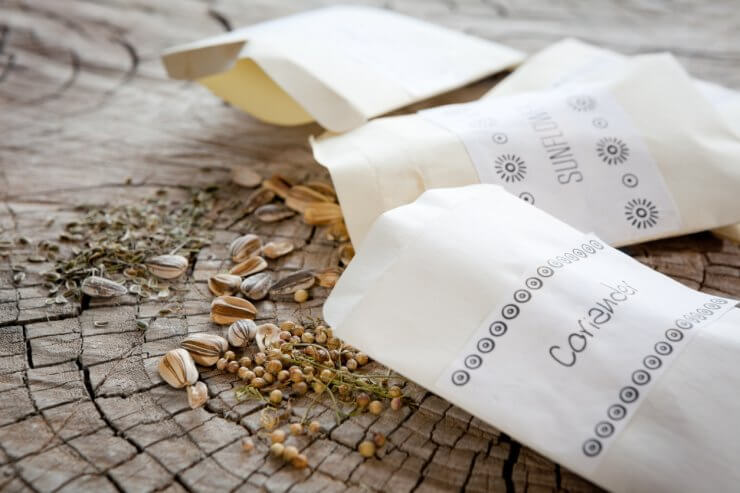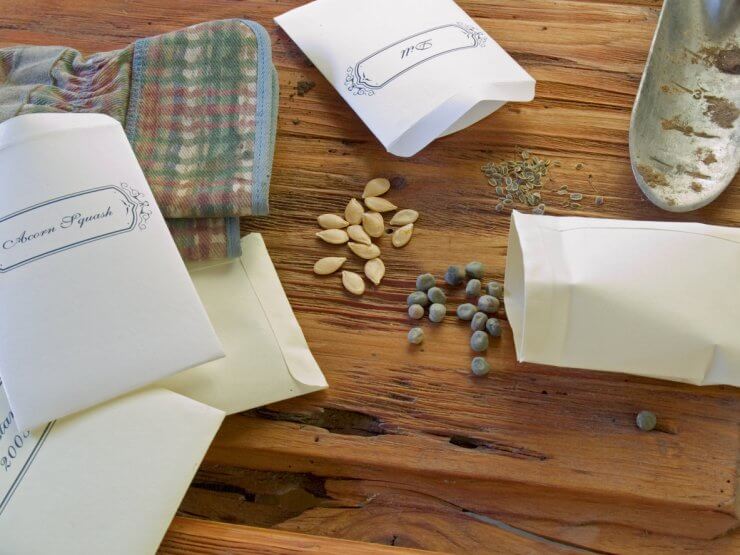
I had the best tomato plant ever this year. The vine grew tall and strong, and once the plant started producing, it didn’t stop until well beyond when every other summer vegetable had died off. The fruit was absolutely delicious, and it got me thinking about how to store seeds long-term.
Nothing against the other varieties of tomatoes I grew; they were good, too. But that Pink Brandywine was something else – rich, sweet, a little tangy. I’m also enjoying the Delicata squash I’ve had from a nearby farm. So naturally, I want to save these seeds to plant in my garden next year.
As we gardeners know, however, there are no guarantees on the future. Not all your saved seeds will germinate. Or your plants could get hit by disease or pests. So if you have a vegetable that you love and plan to grow again in the future, consider how to store seeds long-term. That way, even if next year’s crop doesn’t work out, you still have seeds from your favorites to plant the following season.
Discover 7 top tips for growing, harvesting, and enjoying tomatoes from your home garden—when you access the FREE guide The Best Way to Grow Tomatoes, right now!

Learn how to store seeds long-term, so you can plant your favorite vegetables next season.
In thinking about how to store seeds long-term, let’s look for a moment at germinating seeds. Two of the main ingredients in seed germination are moisture and warmth. Therefore, since we don’t want these seeds to germinate, dry and cool are what we’re looking for.
Seems simple enough, right? Here’s the catch. Fluctuating temperatures can trigger nature to get those seeds ready to germinate. So that shelf in your storage shed or garage probably isn’t ideal. However, a cool, dark spot in your basement or a closet can work for most seeds.
Be aware, however, that some seeds can germinate in cooler temperatures. While the optimal temperature for most seed germination is around 70 degrees Fahrenheit, give or take a little, some seeds, like beets or lettuce, can germinate with temperatures as low as 40 degrees.
It’s not just temperature that causes seed germination, though. Moisture is another part of that equation. So, in addition to cool temperatures as one of the factors in how to store seeds long-term, we also have the humidity factor.
Assuming you’re starting with your own seeds, be sure to properly dry them before storing them. The simplest way to do this, at least for me, is to air dry them. Some seeds, like tomato or squash seeds, will need a good rinse first to get rid of that coating. Spread your seeds out on wax paper, parchment paper, a window screen, a cookie sheet, or anywhere else you can give them space to dry out.
Pro Tip: Label your seeds! Some of these seeds look a LOT more alike than you might realize. Heck, many of them can look nearly identical.
Leave them for a few days while the air circulates and dries your saved seeds. You can run a fan in the room if you like to help keep the air moving, but don’t dry them with a hairdryer or in the oven. That will push them to sprout – or it could cook them.
Once your seeds are clean, labeled, and dry, and you have a nice cool dark place to store them, you’re well on your way. You still have a few options for storage containers. Some people like to use small envelopes to give the seeds a little “breathing room” in case there is some moisture in the air.
You have several options when it comes to containers, though. Some people like to use small Ball jars or Tupperware containers. The key here is an airtight container. That helps keep moisture and pests out.
But there’s one more secret. One major consideration with how to store seeds long-term is the viability of the seed itself. Most seeds are fine for about a year or so. But they all start to break down and become less viable over time. Some seeds, such as cucumber seeds, will give you about four or five years in storage before they become unusable. Others, like okra seeds, are only good for about two years.
What about the freezer? A freezer can be a good option if you’re planning for longer-term storage, or even for short-term storage for crops like leeks or parsnips that don’t enjoy storage. A word of warning, however.
Pulling seeds from the freezer and popping open the container can introduce moisture too quickly, leading to potential rot. What to do instead? Just set your container out and let it come up to room temperature overnight. Once you open your container, give the seeds a few days before you plant them.
Have you saved seeds for long-term storage? What steps did you take?





One note that was overlooked in this article is make sure you are storing O.P. (open pollinated) varieties. Don’t attempt to reuse hybrid variety seeds. You will probably end up with one of the parents and not like the results. Always check this aspect of your seeds.
When only one seed sprouted from a whole packet and I knew that it would be next to impossible to find these seeds again I put a little net around the pumpkin flowers just before they opened and pollinated with a brush. Today after five years I am still planting true plants from the seeds I took. Or … maybe I am just lucky ????
I think that’s amazing! Do whatever works for you!